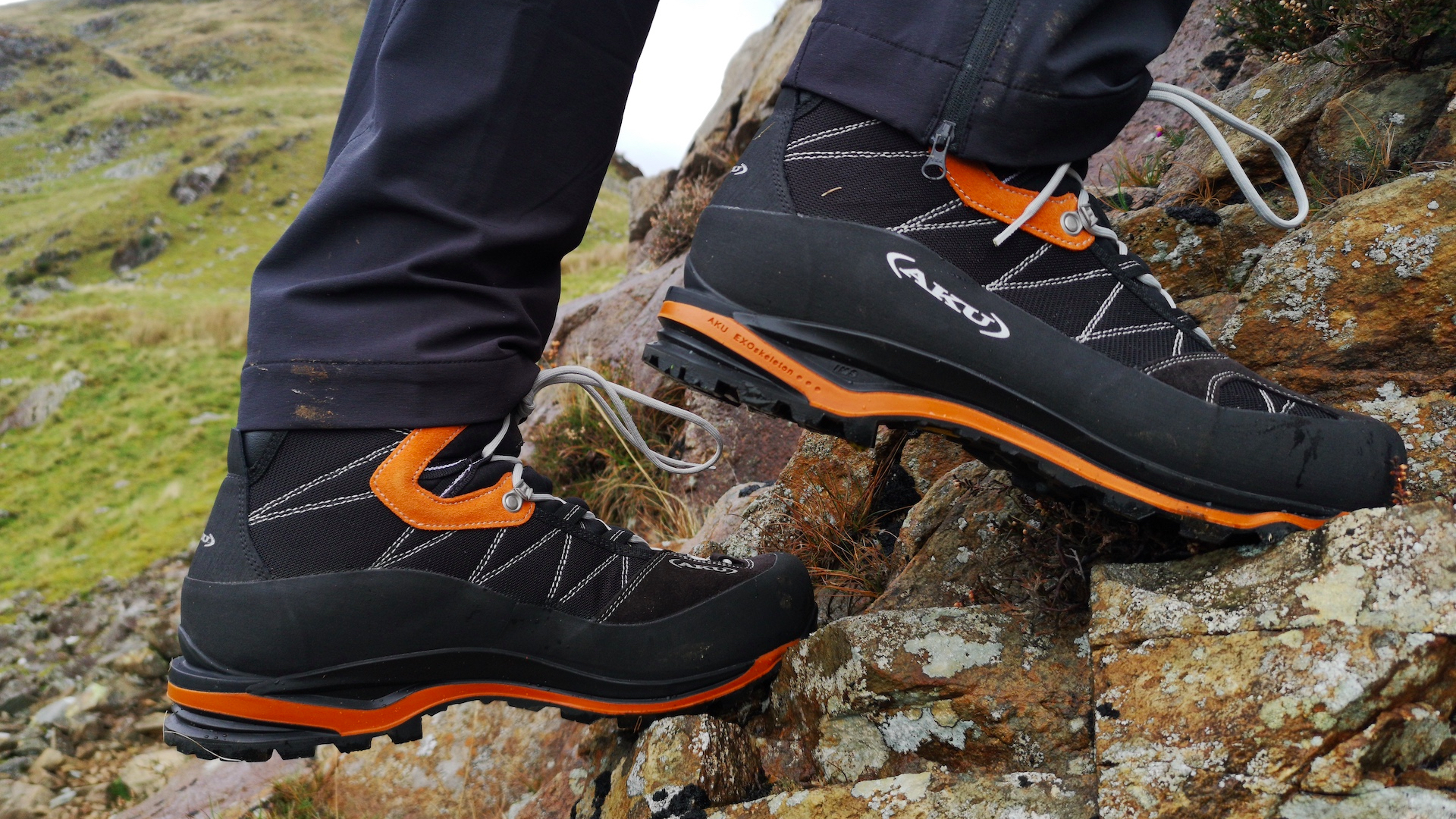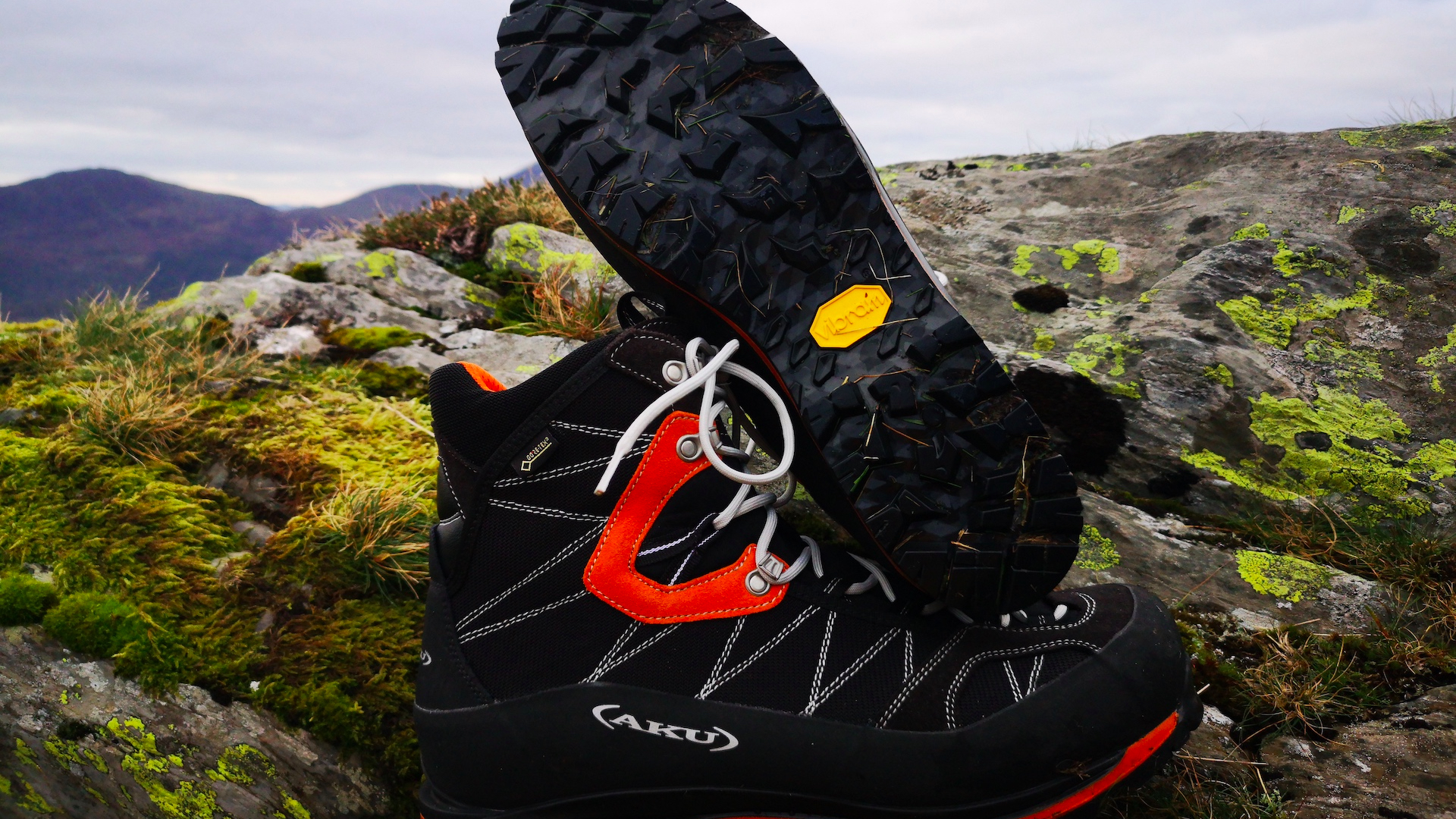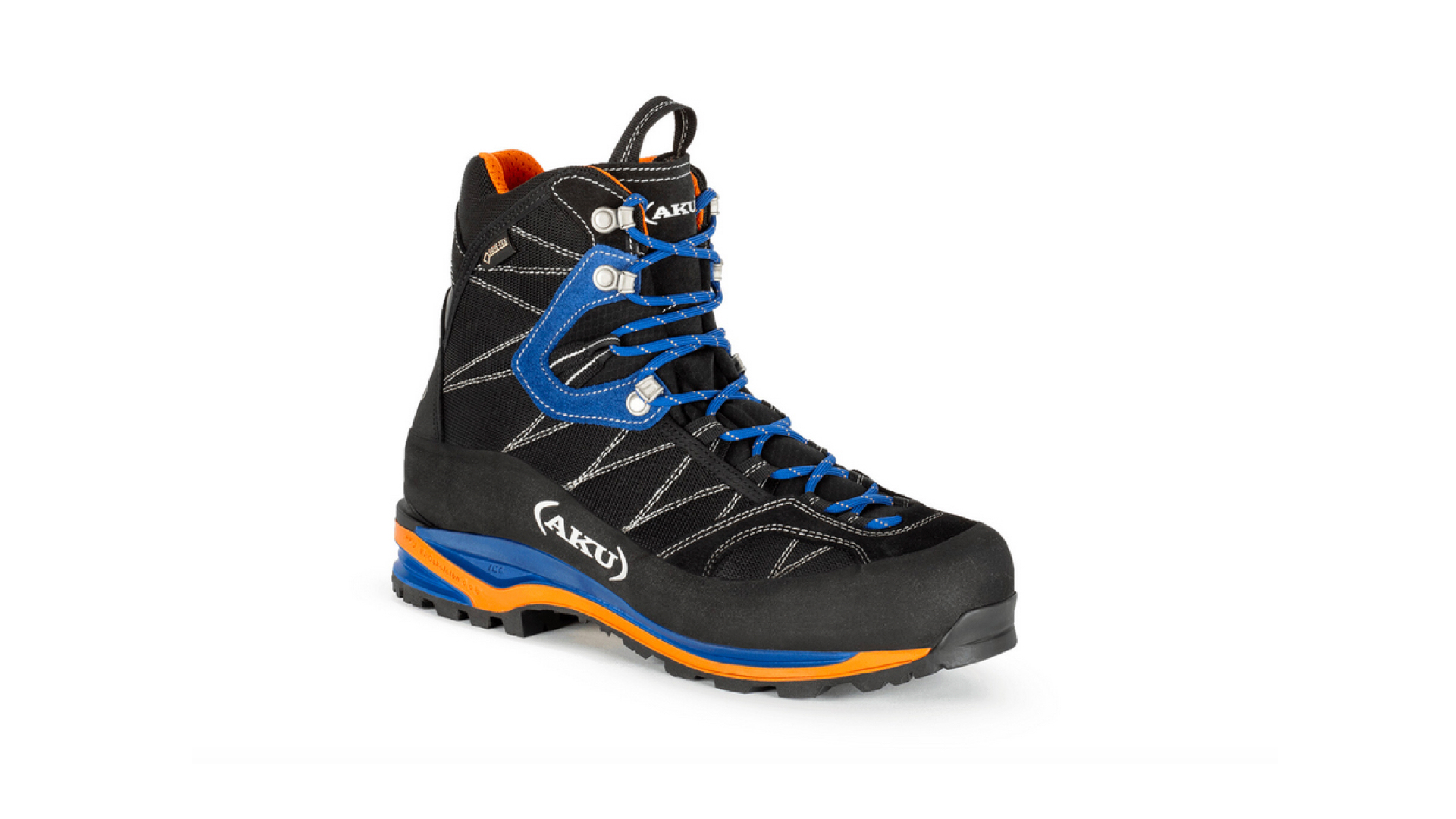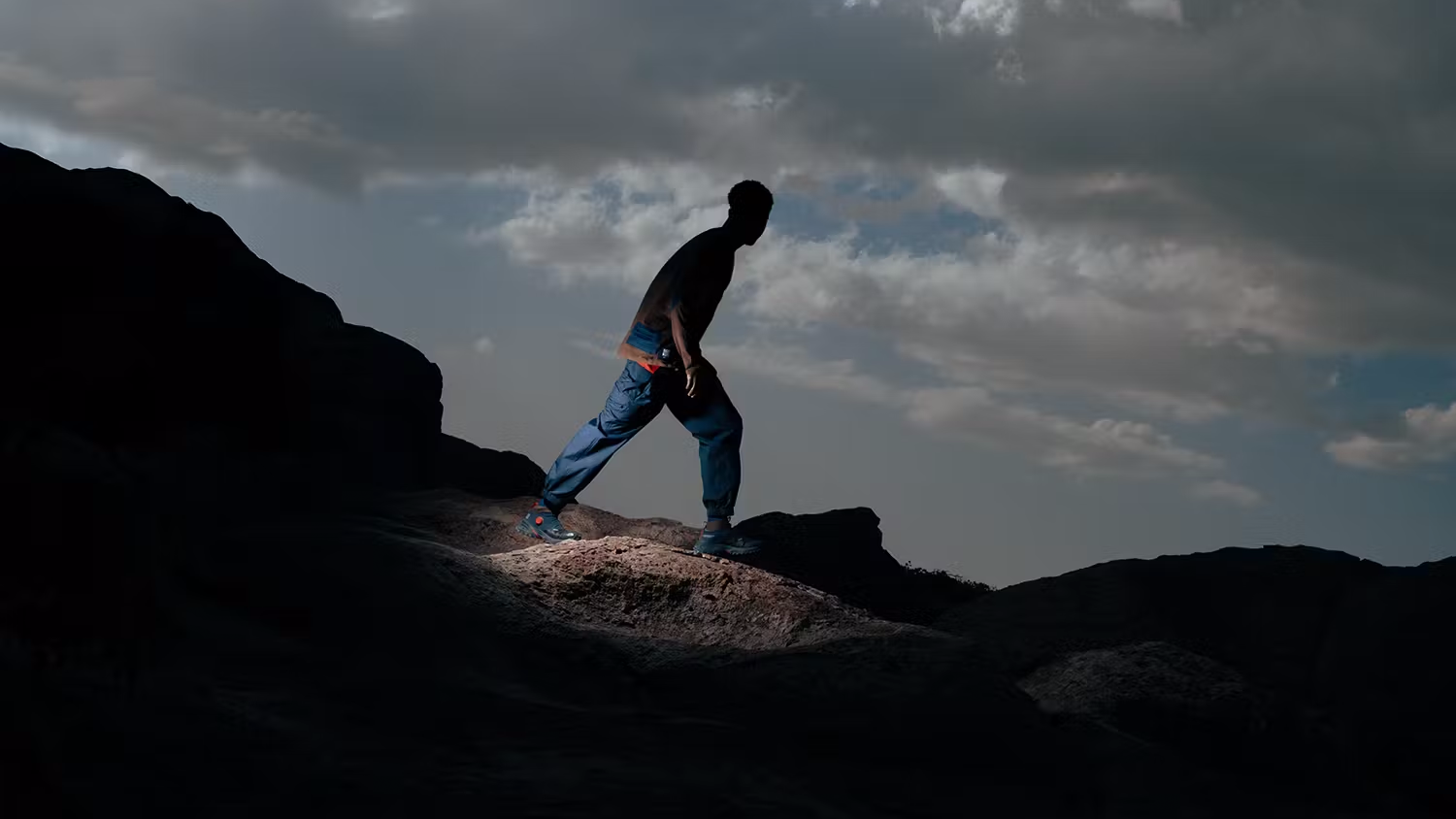Advnture Verdict
A lightweight and capable mountaineering boot with a neat and nimble feel, plus plenty of clever on-board tech – though the lacing system seems to make it a little tricky to dial in a precise fit.
Pros
- +
Lightweight
- +
Supportive
- +
Protective
Cons
- -
Lacing system not the best
- -
Not insulated
You can trust Advnture
AKU Tengu GTX: first impressions
The AKU Tengu GTX ticks virtually all the boxes for what we look for in the best winter hiking boots for the mountains. The design incorporates a high ankle cuff for plenty of support and protection, tough uppers with a wraparound rand for durability, a Gore-Tex lining for reliable waterproofing, and a Vibram sole for reliable traction underfoot.
But there’s even more to the boot than that – it’s just that most of the really clever stuff is hidden from view. Structurally, the boot is made up of a dual-density PU midsole with a carbon fiber shank. This consists of a durable “exoskeleton” along with a lightweight inner section for better cushioning.
It’s a technologically advanced boot, with a modern design and construction. Yet it tips the scales at fractionally over 700g (weight per boot, size UK 9), which is very light for a B2-rated boot. This ought to give it an undoubted edge if you’re planning long, tiring climbs.
• RRP: £290 (UK) / €340 (EU)
• Materials: Suede and nylon with wraparound PU rand, Gore-Tex Performance Comfort membrane lining, Vibram Curcuma outsole
• Weight (per boot): 725g / 1lb 9oz
• Colors: Blue & Black / Black & Orange
• Compatibility: Four season, B2
AKU Tengu GTX: on the trails

These boots came with us on a winter mountaineering course in the Cairngorms, and though when we looked down at the instructors’ feet they all seemed to be wearing Scarpa or La Sportiva, the AKU Tengu proved to be more than a match for those rivals in full winter mountaineering conditions.
We spent most of our time in crampons, though for the odd snowfield approach without spikes fitted, they also proved comfortable enough (see also: types of crampons). However, for front-pointing and traversing as well as for technical mixed climbing on rock and ice, they are brilliant. Their low weight was also a benefit, allowing us to put in some big mountain days without feeling too heavy-legged at the end of it all.
Here’s how they performed in each of the key metrics by which we gauge a hiking boot’s performance:
Comfort
These boots feel supportive yet comfortable, being stiff enough to take a C2 crampon and climb competently, yet with enough cushioning for relatively easy walking (at least for a B2-rated boot – it’s unrealistic to expect trainer-like performance). We’d say it’s pretty much the ideal balance for a boot of this class.
Fit
The Tengu has a slim heel and a broader forefoot with a narrow toe. The extra width gives more room for thick socks, ensuring better warmth and circulation in frozen conditions. That’s just as well, since the suede and nylon uppers are not the thickest and have no additional insulation. On the other hand, this keeps weight down, so for a full-on B2 boot, these are impressively light.
We’d still advise you to check that the fit of these boots suits you. AKU boots are generally known for their precision fit and some reviewers have praised the Tengu in this regard. Unfortunately, we didn’t get on quite so well with them, experiencing noticeable heel slip no matter how tightly we laced the boots. Even trying a thicker insole didn’t help.
A little heel slip is often an issue with stiffer boots, but with the Tengu we think the cause is down to the lacing system. Don’t get us wrong, in many ways it is excellent – the to-toe lacing is ideal for technical, climbing-focused footwear. There’s also a locking lace hook midway up the boot, enabling you to adjust the tension across the top of the foot and the ankle separately. And though the top two lace hooks aren’t the best we’ve used, they do the job adequately enough. Our problem was with the cord loop at the ankle, designed to pull the foot into the heel cup. We don’t think this is set quite far enough back, so it’s tricky (at least in our experience) to really pull the heel in tight.
It’s a minor niggle though, and one that may not affect all foot shapes and volumes. Just because it didn’t suit us doesn’t necessarily mean it won’t suit you.

Performance
It’s a neat-looking boot that feels just as tidy on the foot: the low-profile design and precise toe box all help to ensure an overall sensation of agility and accuracy when climbing. Underfoot, it is supportive and stable, with adequate stiffness to make it a highly competent performer when fitted with a crampon.
This detracts slightly if you’re walking without a crampon on less technical terrain, though at least the lightweight build alleviates foot fatigue, and thanks to that dual-density midsole, they are fairly well cushioned too.
Bottom line: If you’re looking for a technically capable boot for “fast and light”, done-in-a-day mountaineering missions, this is a great choice. It wouldn’t necessarily be our pick for long winter hillwalking days, though (for that sort of thing, take a look at the Meindl Air Revolution 4.1 or the Lowa Cevedale Evo GTX).
Protection
The lightweight build means that the materials used to construct these boots aren’t quite as robust as some heavier rivals. You get a mix of nylon and suede uppers rather than a more traditional all-leather build. Still, they’re by no means flimsy. They’re also backed with a Gore-Tex liner, and we experienced no problems with their waterproofing – even when wading through two feet of snow.
We really appreciated the high ankle cuff, which is more effective than most at keeping snow and ice out of the boot, as well as preventing smaller rocks, pebbles and gravel from entering. The front of the boot is robust enough to confidently kick steps in snow too – which also means that if your footwork is a little clumsy, you won’t end up with bruised toes.
Durability
Looks-wise, some might accuse this boot of being a little fussy. There’s no denying that the uppers incorporate a fair amount of stitching, though everything is double-stitched for added strength. Still, such a construction might indicate the Tengu won’t hold up as well long-term compared to an all-leather mountain boot.
Having said that, it is equipped with a chunky wraparound rand to fend off most trail debris. And we’ve negotiated plenty of rock and ice in these boots, and they haven’t shown visible signs of undue wear.
An outdoors writer and editor, Matt Jones has been testing kit in the field for nearly a decade. Having worked for both the Ramblers and the Scouts, he knows one or two things about walking and camping, and loves all things adventure, particularly long-distance backpacking, wild camping and climbing mountains – especially in Wales. He’s based in Snowdonia and last year thru-hiked the Cambrian Way, which runs for 298 miles from Cardiff to Conwy, with a total ascent of 73,700 feet – that’s nearly 2½ times the height of Everest. Follow Matt on Instagram and Twitter.


